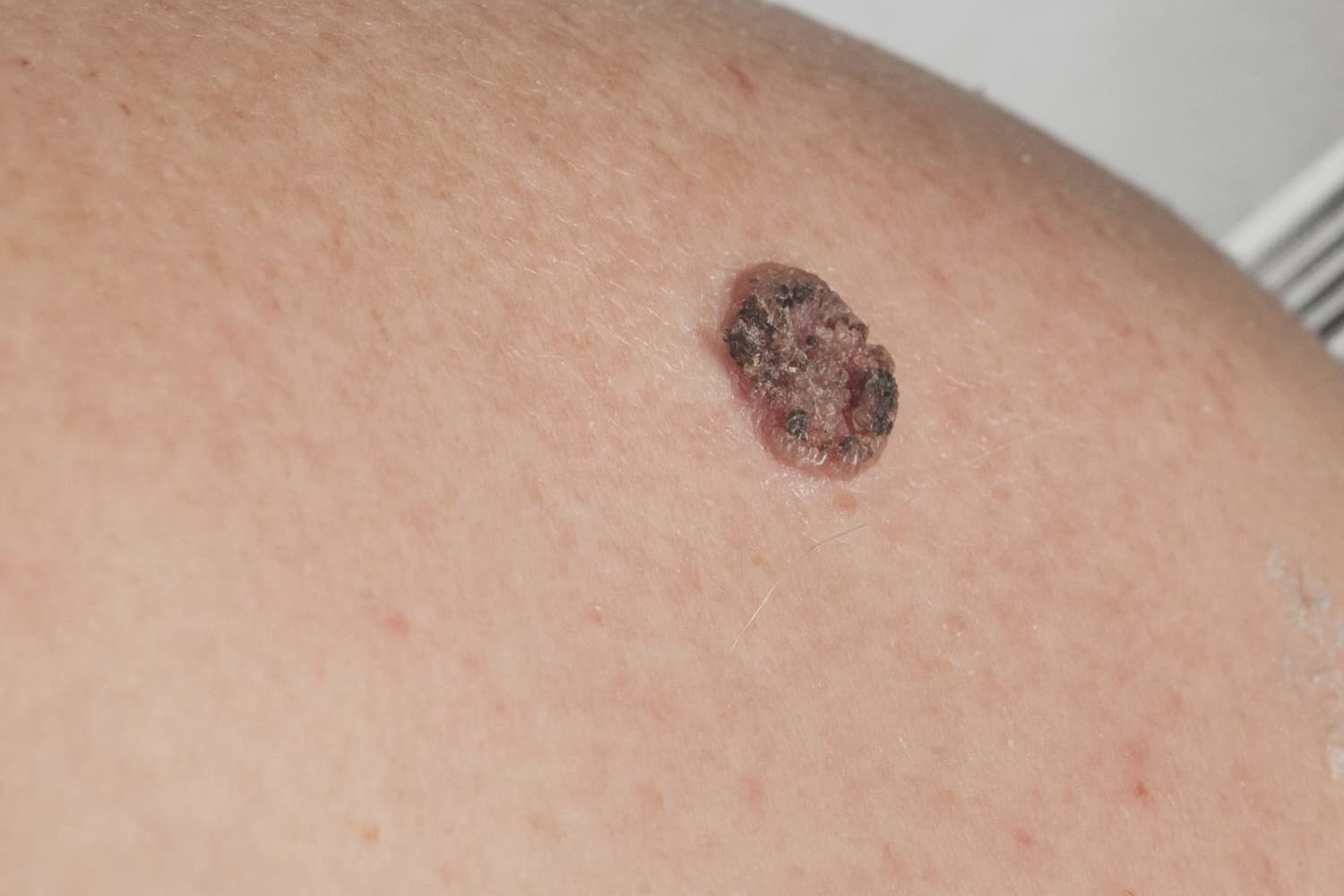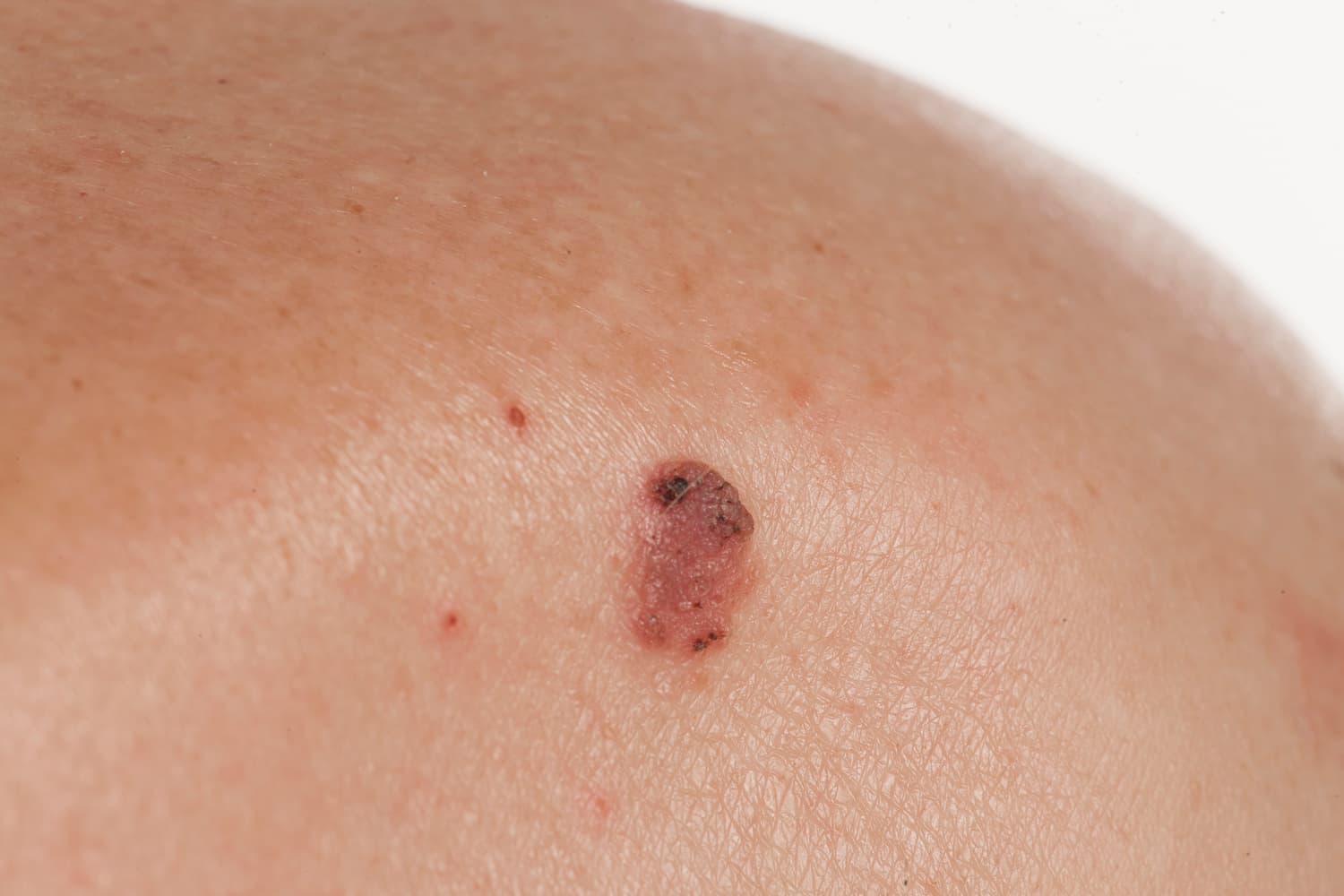What is a squamous cell carcinoma
A squamous cell carcinoma is the second most common type of skin cancer in the UK.
What does a squamous cell carcinoma look like?
SCC can vary greatly in their appearance, but most SCC usually appears as a scaly or crusty area of skin or lump, with a red, inflamed base. SCC are often tender, but some small SCC are not painful.

Who is most likely to have a squamous cell carcinoma?
SCC mainly affects the following groups: Older people - even those who tend to avoid the sun. Builders, farmers, surfers, sailors and people who often are out in the sun, can develop a SCC when they are quite young. Those with a fair skin are more at risk of developing SCC than people with a darker skin.
Anyone who has had a lot of ultraviolet (UV) light treatment for skin conditions such as psoriasis will also be at increased risk of getting an SCC. Those whose immune system has been suppressed by medication taken after an organ transplant, or by treatment for leukaemia or a lymphoma.


How will my squamous cell carcinoma be diagnosed?
Yes, SCC can be cured if they are detected early. If an SCC is left untreated for too long there is a small risk (2-10 %) that it may spread to other parts of the body, and this can be serious.
How will my squamous cell carcinoma be diagnosed?
If your doctor thinks that the mark on your skin needs further investigation, you will be referred to a skin specialist who will decide whether it is an SCC. To confirm the diagnosis, a small piece of the abnormal skin (a biopsy), or the whole area (an excision biopsy), will be cut out and examined under the microscope. You will be given a local anaesthetic beforehand to numb the skin.
Treatments for squamous cell carcinoma
Surgery is the first choice of treatment and several different methods are available. To select the right one, your surgeon will take into account the size of the SCC, where it is, what type it is, and how long you have had it.
The most common surgical technique is simply to cut the SCC away, along with some clear skin around it, using local anaesthetic to numb the skin. The skin can usually be closed with a few stitches, but sometimes a small skin graft is needed.
Other types of treatment include:
Curettage and cautery
First the SCC is scraped away (curettage) then the skin surface is sealed (cautery). This is a reasonable treatment for small SCC
Cryotherapy
Freezing the SCC off, as you would a wart, usually with liquid nitrogen.
Advanced surgery (mohs technique)
undertaken only in specialist centres, and then only for difficult or recurring SCC. This involves the excision of the affected skin that is then examined under the microscope straight away to see if all the SCC has been removed.
If any residual SCC is left at the edge of the excision further skin is excised from that area and examined under the microscope and this process is continued until all the SCC is removed.
The site is then usually covered with a skin graft (should a skin graft be necessary skin camouflage can assist greatly in colour toning the skin graft to match your natural skin tone, making the skin graft less obvious)
Removal of lymph nodes
This is unusual but may be needed if there are concerns that the SCC has spread.
Radiotherapy (x-rays)
May be used if the SCC is large or in an awkward place. You may be offered this on its own or alongside surgery.
Radiotherapy may also be used to relieve symptoms when SCC has spread to other parts of the body.
Chemotherapy
Only used when a SCC has spread to other parts of the body.
Self care
Treatment will be much easier if your SCC is detected early. SCC can vary in their appearance, but it is advisable that you should see your doctor if you have any marks on your skin which are: growing bleeding and never completely healing changing appearance in any way. You can also take some simple precautions to help prevent a SCC appearing:
Top sun safety tips:
Protect your skin with clothing, and don’t forget to wear a hat that protects your face, neck and ears, and a pair of UV protective sunglasses. Spend time in the shade between 11am and 3pm when it’s sunny.
Step out of the sun before your skin has a chance to redden or burn. When choosing a sunscreen look for a high protection SPF (SPF 30 or more) to protect against UVB, and the UVA circle logo and/or 4 or 5 UVA stars to protect against UVA.
Apply plenty of sunscreen 15 to 30 minutes before going out in the sun, and reapply every two hours and straight after swimming and towel-drying. Keep babies and young children out of direct sunlight.




